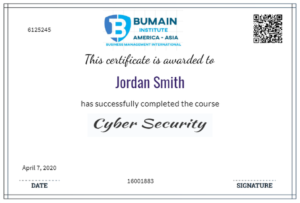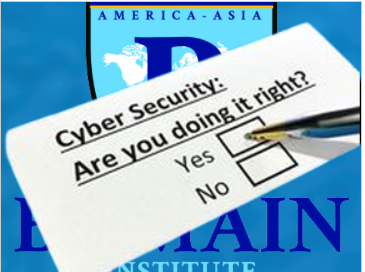Learn Cyber Security
[dearpdf id=”24187″ ][/dearpdf]
Curriculum
- 11 Sections
- 66 Lessons
- 10 Weeks
Expand all sectionsCollapse all sections
- Cyber Security and Cyber CrimeCyber Crime What is Cyber Crime? Just like regular crime, it also exists on the Internet. Here are some examples of Cyber Crime: Identity Theft Online Predators BEC ("Business Email Compromise") Ransomware Stealing of sensitive intellectual property9
- Networking Basics9
- 2.1Lesson 10 : Protocols and Networking
- 2.2Lesson 11 : The OSI Model (“Open Systems Interconnection”)
- 2.3Lesson 12: Layer 7 – Application Layer
- 2.4Lesson 13 : Layer 6 – Presentation Layer
- 2.5Lesson 14 : Layer 5 – Session Layer
- 2.6Lesson 15 : Layer 4 – Transport
- 2.7Lesson 16: Layer 3 – Network
- 2.8Lesson 17: Layer 2 – Link
- 2.9Lesson 18: Layer 1 – Physical
- IP - The Internet Protocol8
- 3.1Lesson 19: Different Networks
- 3.2Lesson 20: NAT (“Network Address Translation”)
- 3.3Lesson 21 : IPv6 – IP Version 6
- 3.4Lesson 22 : ICMP
- 3.5Lesson 23: Traceroute
- 3.6Lesson 24: DNS (“Domain Name System”)
- 3.7Lesson 25: DHCP (“Dynamic Host Configuration Protocol”)
- 3.8Lesson 26: VPN (“Virtual Private Network”)
- Network Transport8
- Firewalls5
- Web Application11
- 6.1Lesson 40:T he HTTP protocol
- 6.2Lesson 41: URLs, Query Parameters and Scheme
- 6.3Lesson 42: HTTP Headers
- 6.4Lesson 43: HTTP Verbs
- 6.5Lesson 44: HTTP Response Codes
- 6.6Lesson 45: REST
- 6.7Lesson 46: Sessions & State
- 6.8Lesson 47: Virtual Hosts
- 6.9Lesson 48: URL Encoding
- 6.10Lesson 49: JavaScript
- 6.11Lesson 50: Encryption with TLS
- Cyber Attacks0
- Cyber Defence7
- 8.1Lesson 51: Cyber Security Security Operations
- 8.2Lesson 52: SIEM (“Security Information Event Management”)
- 8.3Lesson 53: SOC Staffing
- 8.4Lesson 54: Escalation Chains
- 8.5Lesson 55: Classification of Incidents
- 8.6Lesson 56: SOAR (“Security Orchestration, Automation and Response”)
- 8.7Lesson 57: What to monitor?
- Cyber Security Incident Response9
- Cyber Security Quiz0
- Cyber Security Exam0

